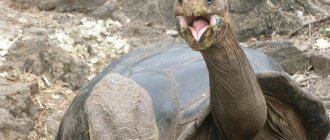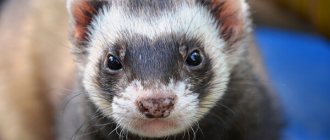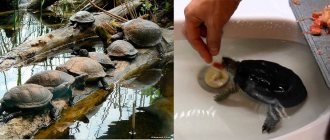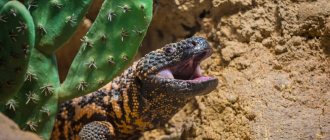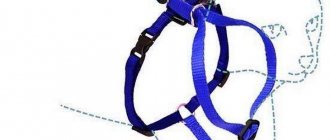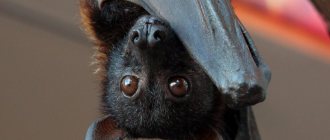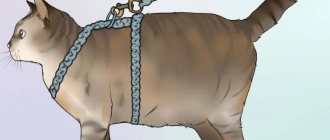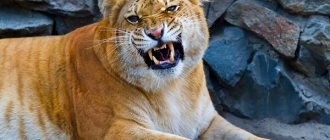The first turtles appeared over 200 million years ago
Turtles first appeared in the fossil record during the Triassic period. They were originally thought to have evolved from early anapsids, but recent research (mostly molecular) argues for a diapsid origin (the group that includes squamate reptiles, crocodiles and birds).
Ancient turtles evolved two mechanisms for neck retraction. Members of the suborder Pleurodira (or side-necked turtles) retract their necks sideways between the carapace and plastron, while members of the suborder Cryptodira (or cryptonecked turtles) retract their necks vertically.
Shortly after turtles appeared on Earth, a mass extinction occurred that destroyed about 90% of all life on land. Luckily for the turtles, their burrowing and water-dwelling habits have prepared them for long-term survival in this strange new world.
About leatherback turtles
Among sea turtles, the leatherback, unlike the others, is able to live in the northern regions. The animal has a high body temperature to survive in cold water. Heating provides regular and complete nutrition for the leatherback turtle.
Leatherback turtle
In the turtle world, it is also the record holder for deep diving: the leatherback turtle is capable of descending to a level of 1.2 km.
Turtles have hard and soft shells.
These reptiles are easily recognized by the presence of a dorsal bony carapace and an abdominal bony plastron with limb girdles located inside the ribs. A turtle's shell primarily provides protection from predators and serves as a buffer against harsh environmental conditions. Most species can retract their head and limbs completely into their shell when stressed. The upper carapace is usually connected to the lower carapace or plastron by a bone bridge.
Photo: Joshua Eckstein
The bony plates, which develop from the dermal (lower) layer of the skin, expand and fuse with each other, as well as with the vertebrae and ribs, to form the carapace. The plastron consists of nine bone elements. The shoulder girdle remains inside the ribs, a feature not found in any other vertebrate. The outer surface of the shell is usually covered with horny scutes formed from keratin in the epidermal (top) layer of the skin. The scutes overlap the sutures of the bone, which increases the strength of the shell and protects the growing parts.
Over time, other variations of the shell appeared. For example, soft-bodied turtles lack horny scutes, have a smaller pleural cavity, and most have completely lost peripheral bones. Although soft-bodied turtles do not have a bony bridge, the shell is firmly attached to the plastron by connective tissue.
Their plastron is greatly reduced, and the bones are weakly connected to each other by cartilage. Fully formed plastral bones of an adult turtle may be covered by two to nine leathery calluses, thick callous layers of the epidermis. Calluses are generally absent in the young, developing slowly as they mature and reaching full size when the individual becomes mature.
What's hiding behind the shell?
- The shell is complexly constructed: it consists of 50 parts (bones or scutes). This is not one plate as it seems. In non-scientific terms, the shell is the turtle's rib cage, located on the outside of the body rather than on the inside. Therefore, the turtle will not be able to jump out of the “house” and walk lightly, as often happens in cartoons.
- Turtles lengthen or shorten the spine - these manipulations are necessary for the animal to stick its head out of its shell or hide.
turtle shell
- Some types of turtles are equipped with shells that tightly close all openings if the animal is in danger. As soon as the reptile becomes alarmed, the shell turns into a reliable fortress.
- The shell, rough on the outside, is permeated with blood vessels and nerve endings. With severe damage, the animal bleeds and experiences pain.
- The shell is ultra-strong and can withstand up to 200 times the turtle's weight.
- The shell contains phosphorus. If a turtle sits in the sun all day, it will glow at night.
Inside of a turtle shell
- Some peoples use turtle shells for fortune telling. They believe that you can learn to read your future from the patterns on the turtle’s “armor.”
- It has been scientifically proven that you can only read the past from the shell of a turtle: the patterns of the scutes, like the annual rings of trees, indicate the age of the animal.
- In land and aquatic turtles, the structure of the shell varies greatly. Land dwellers need a dome-shaped and tall one, while those living in the waters need a streamlined one. Marine shells are drop-shaped, while freshwater shells are flat and low.
The shell of many types of turtles is equipped with hinges
The elastic cartilaginous hinge evolved independently in many species of turtles. A box turtle can retract its head and limbs completely into its shell and press the anterior and posterior lobes of the plastron tightly against the shell. Some African tortoises have a shell hinge that allows the hindquarters to close over the plastron, thereby protecting the hindlimbs. Females of semi-aquatic and terrestrial turtle species may have a hinge in the posterior lobe of the plastron. This joint provides the flexibility needed to lay extremely large eggs.
About the elephant turtle
This is a species of turtle that is in danger of becoming completely extinct.
The only representative of the Abingdon subspecies of elephant tortoises living on Earth is the male George. Scientists were never able to find a female that would suit George for procreation.
Elephant turtle
Lived in the Galapagos Islands (Ecuador) for 100 years and died in 2012. Received the nickname Lonesome George.
Elephant turtles feed on poisonous plants. No other animal in the world can eat something like this and survive.
The size and shape of a turtle's shell is adapted to its environment
Photo: F. Schmidt
The wide, flattened shell of some aquatic turtles functions as a solar panel. A basking turtle changes its position on the stone so that the largest surface area is open to sunlight. In some northern species, the carapace scutes are darkened, which allows maximum absorption of solar radiation. Aquatic turtles have lower, more streamlined shells that provide less resistance when swimming. Extremely flattened shells are found among soft-bodied turtles that hide in shallow water under a thin layer of sand or mud. The flattened shell of the elastic tortoise (Malacochersus tornieri) of East Africa allows it to squeeze into narrow crevices within its rocky habitat. Thanks to the strength of its legs and the natural elasticity of its shell bones, this turtle is extremely difficult to remove once it is wedged between rocks.
Aquatic species that share habitat with large crocodiles have sacrificed the benefits of a streamlined shape in favor of highly vaulted and heavily reinforced shells for protection from crushing. In Asian river turtles—batagura, diadem, and painted turtles—these buttresses form bony chambers that enclose the lungs and prevent compression during deep dives.
In desert tortoises, a dome-shaped shell reduces surface area relative to volume, and a thicker keratin layer slows the loss of water through evaporation. Some turtles even collect drinking water by tilting their shell forward when it rains to catch the water running off it.
Large openings, or fontanelles, between the pleural bones in the shell have evolved in several species. The leatherback sea turtle (Dermochelys coriacea) shows the greatest deviation from the characteristic turtle shell; tiny plates embedded in the leathery shell are all that remains of the bony shell. A reduced shell reduces the physiological costs associated with creating and maintaining a heavy shell (e.g., binding minerals to a substrate that is inaccessible to some physiological processes). This form of shell also reduces energy expenditure for movement in terrestrial species and provides buoyancy in aquatic forms.
Photo: Anthropolio
Dietary preferences vary widely among the turtle family
Turtles' diet ranges from completely herbivorous to completely carnivorous; however, many turtles consume a mixture of plant and animal foods. Some species show a transition from a carnivorous diet in hatchlings to a predominantly herbivorous lifestyle in adults.
Although modern turtles do not have teeth, there are many modifications to the maxillary, premaxillary, and dentary bones for feeding. The pronounced keratin beak can be used to hold and tear food. The palate of herbivorous turtles contains a number of ridges that help macerate plant matter. Macrocephaly, characterized by an enlarged head (as in many female map turtles), often develops in shellfish-eating species. Wide crushing surfaces and powerful muscles allow them to consume plentiful food that may not be available to turtles, which cannot extract this food from the protective shell of the mollusk.
Photo: Christian Miller
Diet
Most turtles are carnivores, but each has adapted to specific prey. Loggerheads prefer fish, jellyfish, lobsters and hard-shelled crustaceans. Leatherbacks feed on jellyfish, salps, crustaceans, squid and urchins; Hawkbills use their bird's beak to feed on soft corals, anemones and sea sponges. Flatbacks feed on squid, sea cucumbers, soft corals and shellfish. Green turtles are carnivores when young, but become herbivores as adults, feeding on algae and algae. Kemp's ridley turtles prefer crabs, and olive ridleys are omnivores, preferring a diet of jellyfish, snails, crabs and shrimp, but also feed on algae and algae.
Each species of turtle has unique limbs and skin texture.
The limbs of most aquatic turtles end in five independent digits; however, in most terrestrial species the phalanges are reduced. The limbs of freshwater turtles are laterally flattened, and the toes are usually webbed. The strong limbs of turtles are round in cross section. Some high-water species, such as sea turtles and loggerhead turtles, have paddle-like limbs and fingers reduced to several claws.
The texture of turtle skin varies from a nearly scaleless and smooth texture in aquatic soft-bodied species to a rough, scaly texture in terrestrial species. Keratin scales of various shapes and sizes are found on the head and limbs of most species. Large thickened scales are adapted to dry habitats. Epidermal appendages such as chin barbels and warts provide covert camouflage that may aid in capturing prey and/or providing protection.
The biggest turtle
Among the ancient turtles, the largest is Archelon: it lived in the Cretaceous period, the shell grew 5 meters in length, the animal weighed 2 tons.
Dimensions of Archelon relative to humans
The giant among today's aquatic turtles is the leatherback. The body reaches 2.5 m in length, weight – 900 kg.
Rare representatives of elephant turtles are among the giants among land turtles: they grow 1.8 m in length and weigh 400 kg.
Aquatic turtles regulate their position using their lungs
The paired lungs are located dorsal to the visceral organs and cannot expand under the action of the costal muscles. Ventilation of the lungs is controlled by the contraction of the pulmonary muscles, but in a relaxed state the lungs are maximally filled with air. By controlling the air flow from one lung chamber to another, aquatic turtles can adjust their position in the water in the same way a fish uses a swim bladder.
Aquatic species are also able to breathe through the skin, the mucous membrane of the throat and through thin-walled sacs in the cloaca. Fitzroy's turtles, which live in well-oxygenated streams, have a wide gaping cloacal opening and rarely rise to the surface. The turtle pumps water through the cloaca. Although cloacal sacs are common to most aquatic species, they are absent in soft-shelled turtles. In these aquatic turtles, 70% of underwater oxygen consumption passes through the skin, and 30% through the mucous membrane of the throat.
In northern climates, turtles, which spend much of the winter trapped in ice, are forced to endure long periods without oxygen. The painted turtle's mineralized shell inhibits the accumulation of lactic acid produced under anaerobic conditions to maintain a stable blood pH during the winter.
Photo: Larry Weber
Dangerous species
Turtles can harm humans if they are representatives of dangerous reptile species. Predatory subspecies - vulture, soft-bodied, big-headed, fringed - these turtles threaten with serious bites.
Vulture turtle
Leatherback turtles unintentionally become the culprits of capsized fishing boats: failing to maneuver in time, they ram into a human vehicle.
Turtles exist on every continent except Antarctica
The diversity of species allows them to inhabit both temperate and tropical regions, as well as all bodies of water. Modern turtles inhabit a wide variety of environments: the open sea, tropical reefs and shorelines, salt marshes and estuaries, freshwater areas of all kinds, and most non-arctic terrestrial biomes; including deserts, rainforests, mountains and prairies. Fossil turtles are found in much the same habitats. The leatherback turtle and some other marine species are known to live near the poles; no fossil turtles have yet been discovered in these regions.
About wisdom
Turtles feel everything in the full sense of the word: they have acute vision, acute hearing, sense of smell and touch. Therefore, with constant communication with their owners, these pets identify them by appearance and smell.
Turtle hides its head in its shell
Turtles understand and distinguish intonations. If they hear gentle speech, they crane their necks, and if they understand that they are being scolded, they hide in their shell.
Most turtle species exhibit sexual dimorphism
Among aquatic species, males tend to be smaller than females and exhibit complex courtship behavior. However, in semi-aquatic and bottom-dwelling species, males are larger than females, courtship is usually kept to a minimum, and fighting over territories and females is common. In temperate climates, courtship and mating may occur in the fall or spring, but nesting is usually observed from spring to early summer.
Although individual females do not breed every year, nesting in most species is annual and seasonal. Females of many species can store sperm in their oviducts for years and fertilize the eggs without having to mate each year. In addition, DNA analysis has shown that eggs in the same clutch are sometimes fertilized by more than one male.
Population and species status
Not so long ago, on the beaches where turtles laid eggs, thousands of females could appear, which could lay hundreds of thousands of eggs. Nowadays, no more than 4 dozen females lay eggs on Midway Island. In other places the situation is almost the same. Given this sad factor, in the middle of the last century a program appeared to restore the number of sea turtles, regardless of habitat.
It is important to know! Since turtles are listed in the Red Book, hunting for turtles, as well as the extraction of eggs, is prohibited in their nesting areas. In addition, it is prohibited to conduct any activity, including economic activity.
While in the reserve, tourists are prohibited from approaching turtles closer than 100 meters. The eggs laid by turtles are placed in incubators, after which the hatchlings are released into safe waters, and only when they are stronger. The program has yielded results and experts are confident that the number of green turtles has increased so much that it inspires hope that green turtles will not disappear from the face of the earth in the near future.
Turtles are characterized by mass nesting
Most turtles choose nesting sites at higher elevations located in close proximity to their feeding grounds. However, some sea and river turtles migrate to nesting beaches. Sea turtles, which nest every two to three years, can migrate over 4,500 km. During an arribada (mass arrival of marine and some freshwater species of turtles at a nesting beach), about 200,000 females nest in the same place over the course of one or two days. Large freshwater river turtles from South America and Asia also nest in large numbers.
Photo: www.chiangraitimes.com
Turtle eggs are usually laid in flask-shaped chambers dug into the ground. However, some species may lay eggs in decaying vegetation and grass litter, in the nests of other animals, and even in underwater or underground nests. Some species quickly cover the eggs with soil and leave the area, while others spend considerable time covering the nest. Despite their vulnerability on land, leatherback sea turtles hide their nest completely before returning to the sea. Others build a false nest some distance from the first, or divide the clutch between two or three nests to confuse predators. Although parental care is rare in turtles, the Asian giant tortoise, which nests in hilly vegetation, will protect its eggs from potential predators for several days after laying.
About sea turtles
Sea turtles navigate in space using the Earth's magnetic field. This skill allows the animal to find its native places from any distance.
Asian softshell turtle
An adult sea turtle is not afraid of meeting a shark. Asian soft-bodied turtles - biting and aggressive turtles - will bite to death when they meet a terrible sea predator in a small flock.
Green sea turtle is the main ingredient in delicious turtle soup.
Sea turtle and dolphins
Sea turtles communicate with dolphins. When going to land to lay eggs, turtles first catch a signal from dolphins - they must confirm that conditions for reproduction are optimal.
Reproductive capacity is related to body size
Smaller species lay one to four eggs, while large sea turtles regularly lay more than 100 eggs at a time. Most species make two or more clutches during the nesting season.
Turtle eggs come in two shapes: elongated or spherical. The shape of the eggs is usually the same within the same genus. The spherical shape has the smallest possible surface to volume ratio and is therefore less susceptible to dehydration. Turtles that produce large clutches (more than 50 eggs) lay spherical eggs to make efficient use of limited space.
Most turtle eggs have a leathery shell, but some have a fragile shell. Eggs with fragile shells tend to be more independent of their environment and lose and absorb less water. But eggs with leathery shells develop faster. Species that do not dig complex nests or nest in particularly dry or very wet soils tend to lay eggs with fragile shells. Conversely, turtles nesting on flood-prone beaches or in areas with limited growing seasons lay leathery eggs.
Interesting Facts
- A turtle with six legs and two heads was discovered in Kyiv. This is a five year old female. More precisely, they are Siamese twins. The amazing animal does not have a name yet. One head of the miracle turtle is responsible for sleep, the second for food.
Siamese twin tortoises
- The snapping turtle is cunning and lazy: it hides in the muddy bottom of a reservoir, with its mouth open and tongue hanging out. When passing fish mistake this tongue for a worm, the snapping turtle gets food.
- These animals are ubiquitous. Turtles are found on every continent on Earth except Antarctica.
- Fans of this animal celebrate World Turtle Day on May 23 every year.
Soviet scientists study turtles that visited the moon
- In September 1968, Central Asian turtles became part of the Soviet lunar expedition: on board the Soyuz-7K-L1 they flew around the Moon, lost weight, but remained alive and well.
- In 1969, a sea turtle helped a drowning man wait for rescuers: for 15 hours the man held on to the shell of the animal, which did not even think of diving back into the depths and returning to the intended route.
- On June 29, 2011, a commotion occurred due to a flock of turtles that came from the bay to JFK Airport (New York) to lay eggs there. Hundreds of turtles occupied the runways and dozens of flights were delayed.
In most turtles, temperature during incubation determines the sex of the hatchlings.
In species with “temperature-dependent sex determination,” temperature during the second third of incubation influences the biochemical development that determines the sex of the hatchling. Two developmental models have been described for turtles. Type I species have a narrow core temperature range (usually between 27-32°C), above which only females are produced and below which only males are produced. Type II species have two main temperature ranges, with males predominant at intermediate temperatures and females at both extremes of the range.
Photo: www.news.wjct.org
Sex determination appears to be genetically determined in Austro-American side-necked turtles, all soft-bodied turtles and some musk and pond species. Among them, only the wood turtle, two species of giant musk turtles, the black marsh turtle and the brown turtle have dimorphic sex chromosomes; all others have the same chromosome sizes in males and females.
Sources
- Abreu-Grobois, A. and P. Plotkin (IUCN Sea Turtle Specialist Group). "Lepidochelys olivacea". IUCN Red List of Threatened Species: e.T11534A3292503, 2008.
- Casale, P. and A.D. Tucker. "Caretta caretta (revised version of 2015 assessment)." IUCN Red List of Threatened Species: e.T3897A119333622, 2022.
- Sea turtle specialist group. "Lepidochelis campii." IUCN Red List of Threatened Species: e.T11533A3292342, 1996.
- Mortimer, J. A. and M. Donnelly (IUCN Sea Turtle Specialist Group SSC). "Eretmochelys imbricata". IUCN Red List of Threatened Species: e.T8005A12881238, 2008.
- Olive Ridley Project: Fighting Ghost Nets and Saving the Turtle.
- Sea turtle conservation
- Spotila, James R. 2004. Sea Turtles: A Complete Guide to Their Biology, Behavior and Conservation. Johns Hopkins University Press.
- "Unlocking the Secrets of Sea Turtle Migration." Science Daily, February 29, 2012
Hatched turtles can remain in the nest for more than a year
Once fully developed, the hatchlings use their caruncle, a small tubercle on the upper beak, to cut embryonic membranes and eggshells. Soon after hatching, most newborns crawl out of the nest and head straight for water or plant cover.
The hatchlings of some temperate species (the box turtle and the yellow mud turtle) are slow to leave the nest. After hatching, they immediately burrow to a depth of 50–70 cm, apparently a behavioral adaptation to escape impending lethal winter temperatures in shallow water or soil. Painted turtle hatchlings remain in the nest for the winter, where they can be exposed to temperatures as low as -12°C.
Other turtles, especially those living in tropical environments, must remain in their nests until rain softens the soil, allowing them to dig out. In dry years, newborns may remain in the nesting chamber for more than a year after hatching.
What does a turtle prefer to eat at home?
If you have a pet turtle, its nutrition, maintenance and care should resemble its natural lifestyle. Before adopting a pet, study what it eats in nature and during what periods it is active.
Young individuals, as a rule, consume 70 percent of live food (food worms, insects, small crustaceans). Growing up, they switch almost entirely to plant foods. Suitable for feeding:
- vegetables and their tops (tomatoes, peppers, pumpkin, carrots, and occasionally cucumbers);
- berries (strawberries, wild strawberries, watermelon);
- fruits (plums, peaches, apples, bananas).
Do not overfeed the animal! If you see that there is food left after feeding, be sure to remove it and subsequently reduce the portions.
If you have a turtle at home, caring for it must necessarily include cleaning the aquarium. Be especially attentive to leftover food: stale food can lead to intestinal upset, which will affect how many years a turtle lives at home.
Growth can vary significantly even within the same clutch
Habitat, temperature, rainfall, sunlight, food type and availability, and sex are associated with turtle growth rates. Their growth is convenient to study because many species retain signs of seasonal growth on their scutes. The rate of growth is also reflected in the ring-shaped layers deposited on the femur and humerus. Most species of turtles quickly reach sexual maturity, then the growth rate decreases markedly. In later years, small species may stop growing completely.
Photo: Stefan Lehner
Turtles are one of the longest-livers in the animal world. Although the lifespan of turtles depends largely on the species, almost all of them can live to a ripe old age. The typical pet turtle can live up to 80 years, while larger species often live over 100 years.
The truth about snail's speed
The stereotype about “turtle” speed is confirmed by land turtles - they are indeed very slow. But in water, these animals are capable of gaining significant speed - up to 35 km/h.
How slow the speed of a land turtle will be depends on the ambient temperature: the lower it is, the slower the turtle.
A turtle named Chester went down in history as the slowest traveler. The pet left its owners in 1960 and was discovered by neighbors in 1995. The white stripe, which the owners awarded the pet just for such a case, helped identify the fugitive. Chester moved away from home by only 686 meters over these 35 years.
